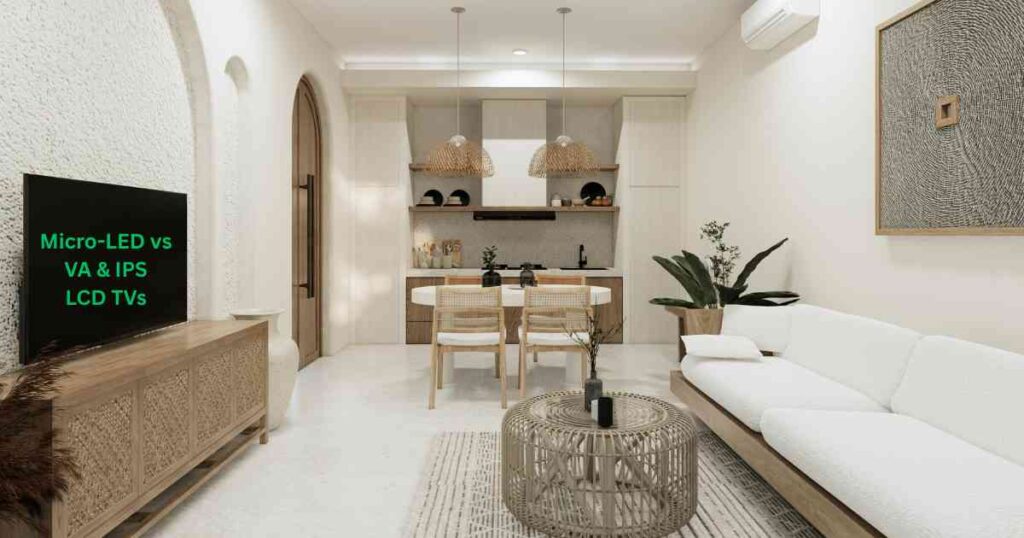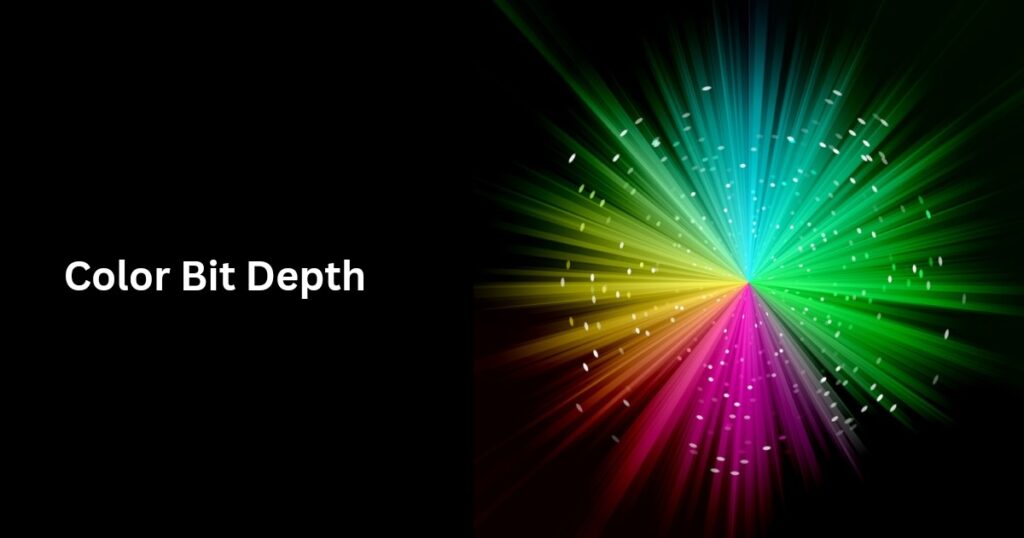How Does Micro-LED Compare to VA and IPS LCD TVs?

These days, a lot of people are asking about the differences between micro-LED and LCD, or even micro-LED vs IPS and VA LCD TVs.
So, in this article, we’re going to break down how VA and IPS LCD TVs stack up against micro-LEDs to help you figure out which one’s the better fit for your needs.
Micro-LED TV
Micro-LED is a self-emissive display tech that uses tiny, micrometer-sized red, green, and blue inorganic LEDs.
These LEDs sit behind each pixel in a micro-LED TV, meaning every pixel can light itself up.
Because of that, these TVs can pull off amazing contrast levels and deliver true, deep blacks.
VA and IPS LCD TVs
Unlike micro-LEDs, LCD TVs, popularly known as LED TVs aren’t self-emissive.
They need a backlight to create an image.
This backlight stays on all the time, even when the screen is supposed to show dark scenes.
Because of that, the blacks on LCD TVs often look more grey than truly black.
LCD TVs are classified into two categories based on their panel types: VA and IPS.
VA panels usually offer better contrast, while IPS panels are known for their wider viewing angles.
Comparing Micro-LED With VA and IPS LCD TVs
Now that we’ve covered the introduction, let’s compare micro-LED technology with VA and IPS LCD TVs based on their features.
Contrast & Blacks
The self-emissive pixels in a micro-LED TV allow it to deliver true blacks.
Because the display is made up of millions of inorganic RGB LEDs, it can achieve ultra-high brightness levels without the risk of pixel degradation.
This results in an exceptionally high contrast ratio.
That being said, high-end VA LCD panels equipped with mini-LED backlighting offer impressive contrast ratios, though they still fall far short of what micro-LED can achieve.
Some blooming and slightly imperfect, though generally deep blacks may be visible on VA LCD TVs.
On the other hand, IPS LCD TVs inherently have lower contrast than VA panels and significantly lower contrast than micro-LED displays, regardless of whether they use standard LED or mini-LED backlighting.
Color Gamut & Color Volume
VA or IPS LCD TVs that utilize quantum dots are generally capable of producing a wide color gamut.
When paired with high peak brightness, especially in models featuring mini-LED backlighting, they deliver impressive color volume.
However, VA-based mini-LED TVs tend to outperform their IPS counterparts, reaching brightness levels above 4,000 nits and offering superior color volume in HDR.
As for micro-LED TVs, their inorganic RGB emitters enable them to achieve the most precise and widest color gamut.
Thanks to their ability to reach extremely high brightness levels, even exceeding 10,000 nits, these displays can produce significantly greater color volume than any conventional LCD or OLED TV.
Viewing Angles
Micro-LED displays offer the widest viewing angles among all display types, as each pixel can completely turn off when not in use.
In contrast, LCD TVs rely on a backlight rather than self-emissive pixels, which limits their viewing angles.
That said, IPS LCD panels provide wider viewing angles than VA panels, but they still fall far short of the exceptional viewing range that micro-LEDs can deliver.
Response
In a micro LED TV, the LEDs are embedded directly behind each pixel, enabling an incredibly fast response time of about 0.2 nanoseconds.
This ultra-quick reaction ensures that gaming and fast-paced action scenes appear smooth and free from screen tearing at virtually any refresh rate.
In contrast, LED TVs rely on a backlight that must pass through multiple LCD layers before reaching the screen, resulting in a much slower response time of around 5–10 milliseconds, over a million times slower than that of micro-LEDs.
While this delay is still small, it can lead to minor ghosting or motion blur when gaming on VA or IPS LCD TVs, particularly at higher refresh rates such as 240 Hz and beyond.
Size, Style & Resolution
Currently, micro-LED TVs are available only in large sizes, typically starting from 76 inches.
In contrast, LCD TVs come in a much broader range of sizes, from as small as 32 inches to more than 100 inches.
Talking about resolution, LED TV resolutions vary from HD to 4K and even 8K, whereas micro-LED models are limited to Full HD and 4K options.
In terms of design, micro-LED TVs are extremely thin because their LEDs are integrated directly into the screen, eliminating the need for a backlight.
Meanwhile, LCD TVs with LED backlighting are thicker and cannot achieve the same slim profile.
Price & Durability
Micro LED TVs are extremely expensive because their production involves fabricating millions of tiny inorganic LEDs within the screen, making the manufacturing process highly complex and costly.
In contrast, LCD TVs are much more affordable, with even their top-notch models priced at only a small fraction of a micro-LED TV’s cost.
In terms of lifespan, both micro-LED and LCD TVs are highly resistant to pixel degradation and burn-in unlike the OLEDs, as they use inorganic materials that rarely experience wear over time.
Micro-LED vs VA & IPS: Which is the Best TV Tech?
We find that micro-LED TVs outperform VA and IPS LCD TVs in nearly every aspect except for the pricing factor and size availability.
The micro-LEDs offer ultra-fast response, exceptional durability, an ultra-slim design, and the highest contrast and peak brightness.
However, they are extremely expensive, often costing hundreds of thousands of dollars.
On the other hand, many high-quality LCD TVs can be found for just a thousand dollars.
Moreover, VA LCD TVs with mini-LED backlighting can deliver very deep blacks, while IPS LCDs provide excellent viewing angles.
Although these features of VA and IPS LCD TVs can’t match the performance of micro-LEDs, they still deliver solid picture quality at much more accessible prices and in a broader range of sizes.
Therefore, until and unless micro-LED TVs become available in more sizes and at much lesser prices, a high-quality IPS or VA LCD TV, ideally with mini-LED backlighting remains the smart choice for a good viewing experience.


